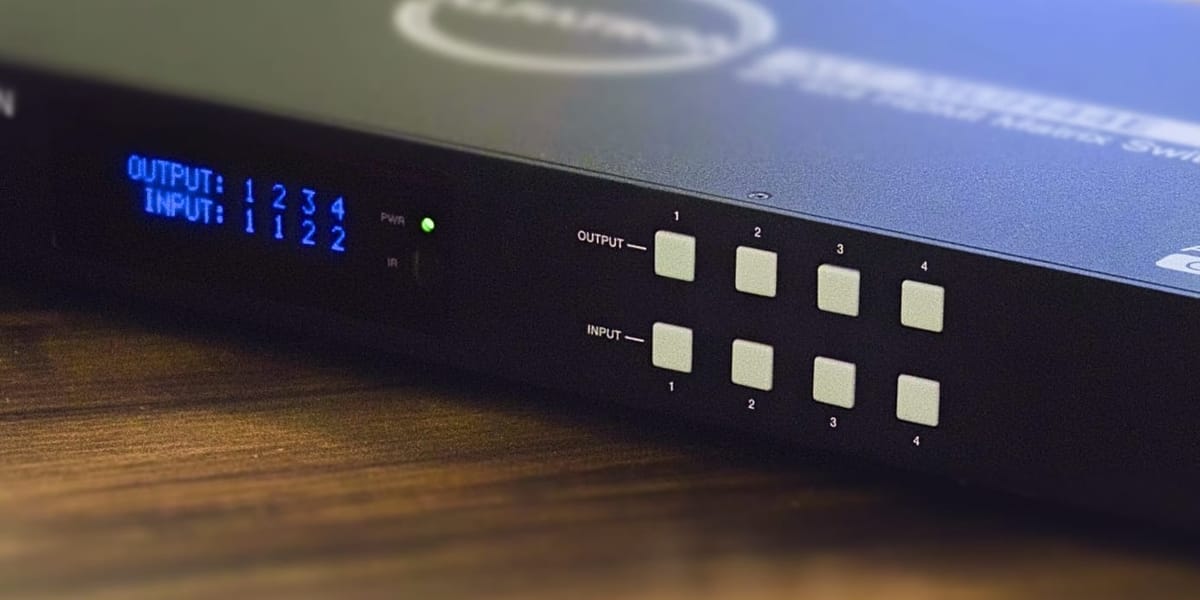HDMI Matrix Guide
This guide, along with this video tutorial, offers a detailed walkthrough on utilizing the Alfatron HDMI Matrix at Fairhaven United Methodist Church. It simplifies managing video inputs and outputs across various locations.

Introduction
This guide offers concise instructions tailored for the daily operations of the Alfatron HDMI Matrix at Fairhaven United Methodist Church. Focused on efficiently managing video inputs and outputs across various key locations within the church—such as the projector overhead, the monitor facing the choir, Burton Hall Downstairs, and the Old Room Downstairs—it ensures users can effectively route video signals to enhance worship services, meetings, and events.
Getting Started
- Power Management: Always ensure the Matrix is powered on when starting your day and remember to turn it off post-use to save energy and extend the device's life.
- Keep this Handy Reference: Familiarize yourself with the output and input numbers to quickly make changes during live events or services.
Switching Inputs and Outputs
Manage where your video sources are displayed using the Alfatron HDMI Matrix with ease:
- Output Designations:
- Output 1: Projector Overhead.
- Output 2: Monitor Facing the Choir.
- Output 3: Burton Hall Downstairs.
- Output 4: Old Room Downstairs.
- Input Sources:
- Input 1: PC or Mac Mini.
- Input 2: Mounted Camera.
- Routing Video Sources:
Simply press the output button until it flashes, then select the input source to direct a video source to a specific display. For example:- PC to Projector: Press 1, then 1.
- PC to Choir Monitor: Press 2, then 1.
- Camera to Burton Hall: Press 3, then 2.
Adjusting EDID Settings
Though the EDID settings have already been configured for optimal video and audio output across the church's devices, understanding how to adjust these settings can be beneficial:
- Purpose of EDID: Enables seamless communication between the Matrix and connected displays, ensuring the highest quality output.
- Adjustment Access: While initially set, knowing how to access the Matrix menu for EDID adjustments can come in handy for future device changes or updates, ensuring continued optimal resolution and audio quality.
- Default Configuration: Pre-configured to a 1080p resolution with two audio channels, it caters to the general needs of the church's current setup.
- Customization Options: For informational purposes, the Matrix includes resolution settings such as 720p, 1080p, 4K, and various audio configurations. The EDID can also be set to mimic the settings of a connected device, simplifying future setups.
Additional Features and Settings
Beyond the basics, the Matrix's menu offers:
- Advanced EDID customization.
- Serial connection baud rate adjustments.
- Network address settings.
These features support integration into larger AV systems, controllable via front panel, IR remote, RS-232, LAN, and Web GUI.
References
- For detailed technical specifications and advanced operational instructions, consult the Alfatron HDMI Matrix manual.